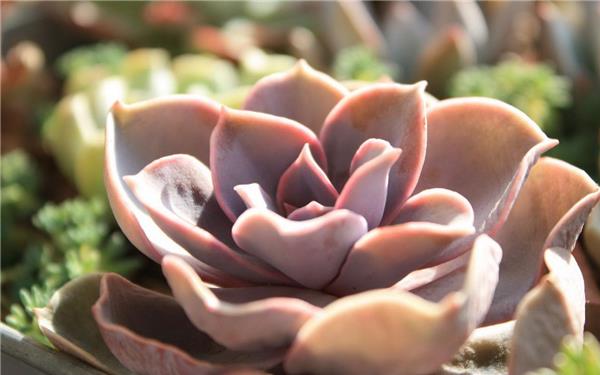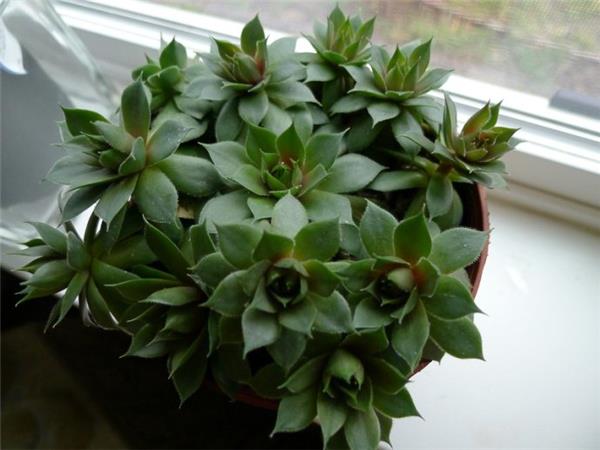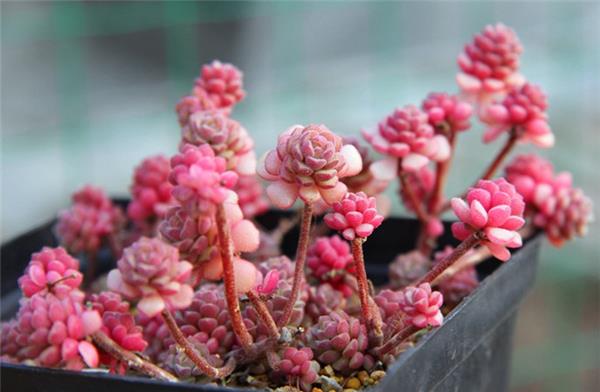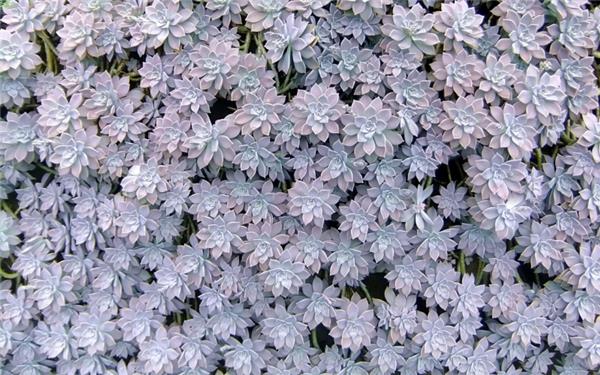How to take care of the lovely succulent plants
It's the hot season again, which is another test for fleshy plants, and we have to take care of them carefully in this season. And this season is not the only need for this, other seasons also have related precautions, let's learn three aspects.

I. five key points for the cultivation of fleshy plants
Culture soil: fleshy plant cultivation requires that the soil is loose, breathable and well drained, but it has a certain water retention capacity and is neutral or slightly acidic. Highland globules (Yuehua jade, amber jade) and peony can add a little more rice chaff ash and small-grained weathered rocks. Tall columnar species can be mixed with large grains of quartz sand to fix the plant.
Transplant and planting: generally, it should be carried out during the recovery period just after the plant dormancy. Root should be trimmed before planting. After root trimming, you should hang it for a few days and then plant it with wet soil. After planting, do not rush to water the sun and do not apply fertilizer within a month.
Temperature and light: except for a few flat stem nodes and tall columnar species and some tequila plants, the fleshy plants that grow in summer should be cultivated in the greenhouse all the year round, and the temperature can be adjusted with reference to terrestrial cacti. Their requirements for light are relatively low, and some species with expanded stem bases are not cold-resistant and should maintain a higher temperature in winter.
Watering and fertilization: watering should be carried out according to its growth state. No matter the type of dormancy in winter or summer, stop watering the basin during the dormancy period. The seedlings should be watered more, but the big balls should be less; the terrestrial type should be watered less, and the epiphytic type should be watered more; the bud and flowering stage should be watered more, and the flower and fruit should be irrigated less. Fertilization should be carried out in the vigorous growth period and budding stage. Organic manure must be fully mature. When applying chemical fertilizer, the ratio of nitrogen, phosphorus and potassium is 5 ∶ 15 ∶ 10 or 5 ∶ 10 ∶ 10, and a small amount of trace elements should be mixed.

2. How to change pots for succulent plants
1. Stop watering 3 to 5 days before changing the basin. When planting new plants, a layer of screen should be placed on the drainage hole at the bottom of the flowerpot to prevent insect pests, and then the yarn net should be covered with tiles to facilitate drainage.
two。 When changing the basin, first deduct the plant from the basin and shake the soil at the root clean. Cut off the old root, rotten root and hollow root, and retain the root system with strong, full and good absorptive capacity. However, for varieties with hypertrophic fleshy roots, such as cactus, peony and black jade, it is not easy to excessively cut roots, because these fleshy roots store rich nutrients, if excessive pruning will affect growth, even rotten roots, and the whole plant will die. If there are young plants next to the old plants, you can break them off, prune the roots properly, remove the dry leaves, and plant them separately.
3. If the wound is too large when dividing the plant, you can apply sulfur powder, charcoal powder, carbendazim or other antiseptic drugs to the wound and let it dry for 3 to 7 days.
4. Different varieties of fleshy plants should be planted with different culture soil, coarse-grained soil should be placed at the bottom of the flowerpot, and then fine-grained soil should be placed to straighten the plant, and lift the plant slightly while adding soil to stretch the root system. Don't overfill the soil so that it can be watered later.

III. Shell pest control of fleshy plants
1.75% alcohol has the effect of surface sterilization and disinfection, and after treatment, the main components volatilize quickly, and the epidermis remains less, so it is not easy to form spots that affect the beauty of the plant; on the other hand, the oil painting pen can flexibly and effectively brush off the crustacean insects in the cactus and fleshy plant valleys, folds, lean bases, back of leaves and overlap of two leaves.
two。 After brushing, the plants are soaked in 1000 times diluent of 40% EC for a while and then dried (such as this step of family cultivation can be omitted), and placed separately; at the same time, combined with changing the basin and rearranging the soil, the replaced basin is washed and sterilized at high temperature or soaked in 0.05% potassium permanganate diluent to prevent secondary transmission. During this period, we should strengthen the management and pay attention to the recurrence of shell pests.
3. It should be noted that this method is only a last resort remedial measure, for the maintenance of cactus and fleshy plants need to be based on prevention, supplemented by treatment. Strengthen ventilation and ventilation in early spring, adjust the basin distance timely, and pay close attention to the occurrence and spread of various scale insects.

Generally speaking, fleshy plants are relatively small and lovely, and they are very suitable to be placed in desks, desks and other places, which can not only beautify the room, purify the air, and maintain eyesight, but also make people feel relaxed after seeing them. adjust the tense pace of life, so we must pay more attention to them.
It can not only beautify the room, purify the air and maintain eyesight, but also make people feel relaxed and adjust the tense pace of life, so we must pay more attention to them.
Related
- Wuhan Hospital Iron Tree Blooming Result Was Instantly Frightened by the Gardener Master
- Which variety of camellia is the most fragrant and best? Which one do you like best?
- What is the small blue coat, the breeding methods and matters needing attention of the succulent plant
- Dormancy time and maintenance management of succulent plants during dormancy
- Minas succulent how to raise, Minas succulent plant pictures
- What are the varieties of winter succulent plants
- How to raise succulent plants in twelve rolls? let's take a look at some experience of breeding twelve rolls.
- Attention should be paid to water control for succulent plants during dormant period (winter and summer)
- Watering experience of twelve rolls of succulent plants
- Techniques for fertilizing succulent plants. An article will let you know how to fertilize succulent plants.



